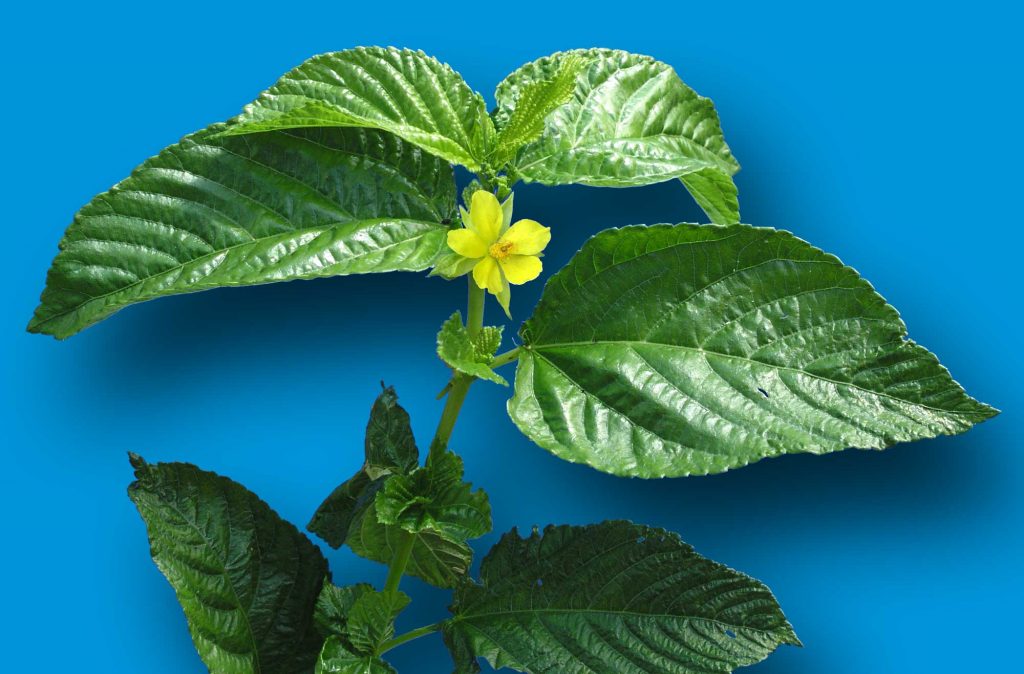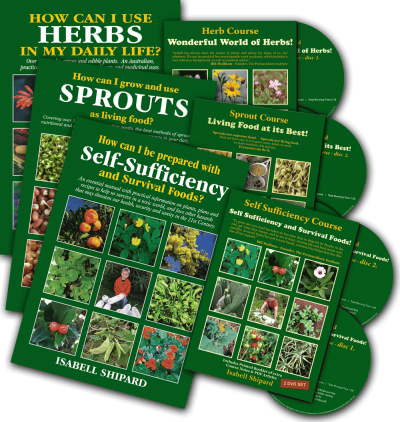Jews’ Mallow, Melokhia, Melokheya, Moluka, Egyptian
Spinach, Bush Okra, Vegetable Jute
Corchorus olitorius F. Tiliaceae
Description
Upright, annual bush to 1 metre; of Indian origin, with oval, glossy, dark-green leaves to 10cm, with finely serrated margins. Yellow flowers, with five petals, 1cm in diameter, form in leaf axils and set seed capsules 5cm long, which on maturity can split open longitudinally into 5 segments, revealing many tiny dark brown, diamond shaped seeds.
… … omitted text, please see How can I use HERBS in my daily life? for full text.

Medicinal Uses
In many tropical and third world countries; the leaves are highly regarded as a tonic. Fresh or dried leaves are used as a tea, and valued for strengthening and invigorating the body. Leaves are rich in mucin, a valuable mucilaginous healing substance, used as an aid to the removal of mucus and toxins from the body.
Eat leaves to alleviate the following complaints: respiratory conditions, tonsillitis, bronchitis, vomiting, fatigue, diarrhea, dysentery, lymphatic ailments, constipation, bowel inflammation, liver and urinary problems including toofrequent urination. Leaves made as a tea are drunk for speedy delivery of baby, to remove afterbirth after delivery, and to increase milk supply. As a wash, the tea is used to bathe sore and inflamed eyes, wash wounds, bites, rashes, and as a hair conditioner. Tea is made with 1 teasp. of dried herb or 15cm stem with leaves (finely chopped) to 1 cup of boiling water. The tea can be dressed up with peppermint or other flavouring herbs.
Several years ago Bill called for herbs. Then he called quite some time later to say he eats salad mallow by the handful and finds it wonderfully health promoting, and very effective for sinus relief. He also dries leaves, which he uses as a tea in the winter, when the plant is not growing.
… … omitted text, please see How can I use HERBS in my daily life? for full text.
A leaf analysis at a Brisbane laboratory, for mineral content, revealed, exceptionally high potassium, at 3068mg per 100 grams of leaf, making it possibly the richest plant source of potassium that we can grow. It appears that this content is only surpassed by dulse (8060mg) and kelp (5273mg), which would rarely be part of our daily diets, and not able to be grown in the garden. Potassium’s role is vital to muscular tissue, especially the maintenance and repair of such tissue, which is important for strength and vigour. Potassium is essential, for digestion of carbohydrates and the liver’s conversion to glucose, utilized as an energy source. Potassium aids blood and oxygen circulation, and assists with elimination of blood impurities and toxic wastes.
… … omitted text, please see How can I use HERBS in my daily life? for full text.


